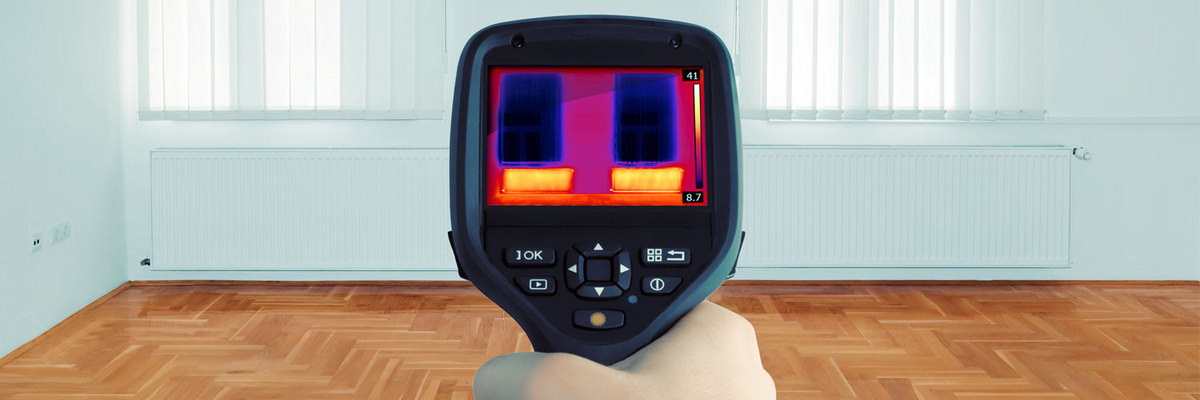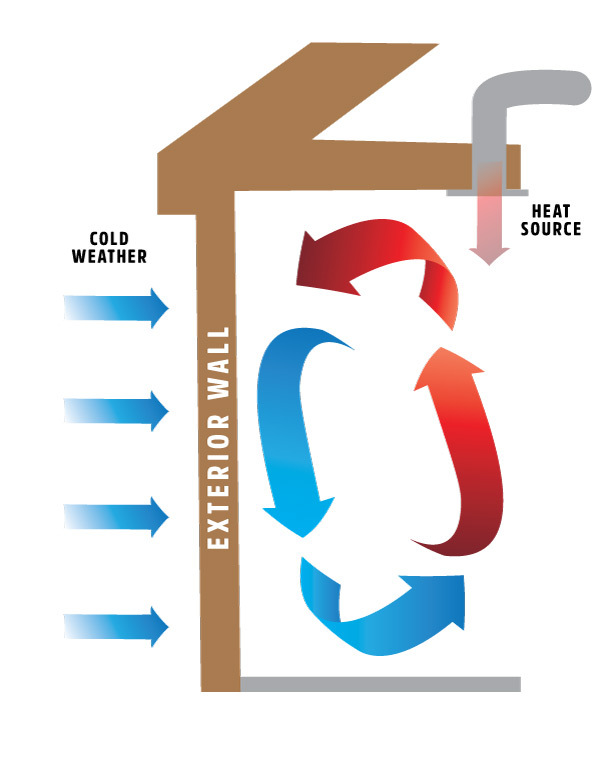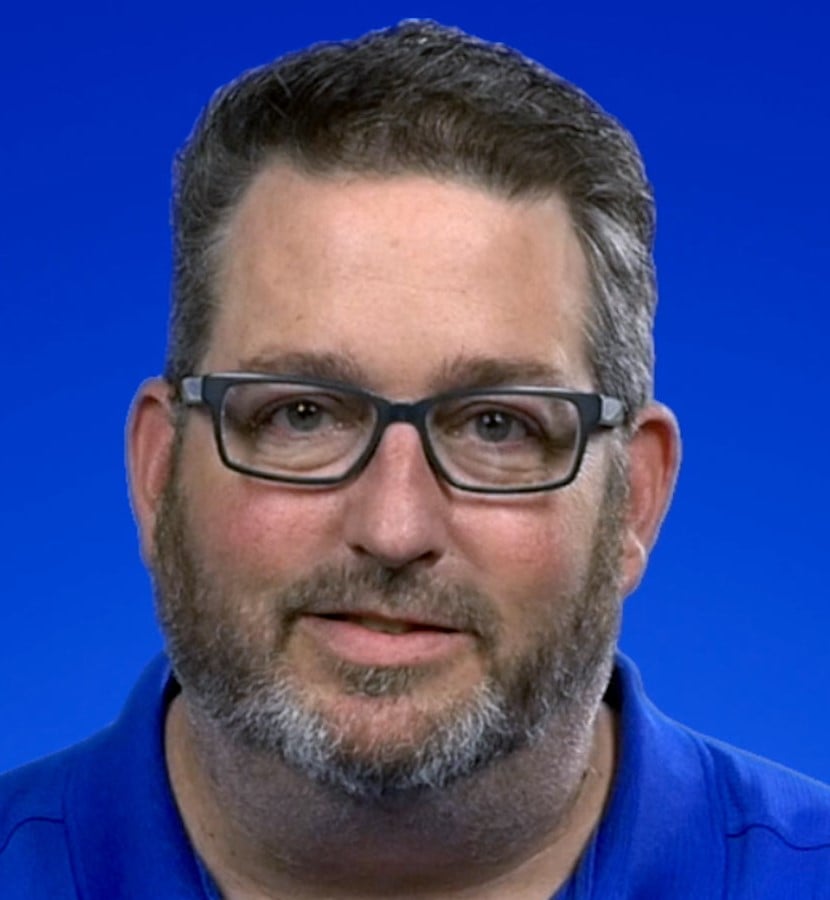What is Convective Loop Heat Loss in a Home?


There are many factors that can contribute to heat loss in a home.
While some are more obvious – like windows, doors, etc. -- others are not, and it is important to learn about these to achieve maximum energy efficiency in your home.
Why spend extra money on energy costs when there could be an easy solution?
One such way heat can be lost is through convective looping.
In this article, I will touch on two types of convective looping -- closed and open loop, the problems both cause and the solutions to stop convective loop heat loss in your home.
Convective Loop Definition

Convective loop heat loss is the way energy is lost from the living space through the building envelope.
Open convective looping occurs when cold air enters the home, is heated, and escapes back out of the home.
During closed convective looping, the air rises and falls within the walls based on temperature. As it touches the warm interior surface, it rises and hits the cold exterior surface, causing a closed convective loop.
Convective loop heat losses occur in buildings within uninsulated, wood-framed, or metal stud interior partition walls, as well as in hollow-core masonry walls.
Why Is Convective Loop Heat Loss Important?
So, why is it important to educate yourself on convective looping?
As a homeowner, I’m sure you know that one small problem can cause a domino effect that can lead to many larger problems down the road if not addressed right away, and it is no different when addressing heat loss.
Let’s take a look at some of the implications that can arise with convective looping.
Insulation Can Become Ineffective
Insulation effectiveness is eliminated if the air is allowed to pass through it.
With convective looping, that airflow is constant, which in turn expedites the rate at which the insulation breaks down.
Negatively Impacts Plumbing and Energy Distribution Systems
Proper insulation acts as a barrier between conditioned and unconditioned space.
When there is a breach in the insulation envelope, it allows for air and moisture to combine in the walls of your home. This could lead to plumbing issues such as frozen pipes.
Likewise, it could interfere with the efficiency of your heating and cooling ducting and its ability to distribute the conditioned air.
Leads to Discomfort in the Home and the Wallet
Have you ever cranked your thermostat up to 70 degrees on a cold day to get your house cozy and warm?
Heck, we all have! But, the phenomena of convective looping can cause thermostats to give false readings, resulting in significant portions of the interior room surfaces to be at levels that produce uncomfortable temperatures.
How about when you get that energy bill that you’re hoping will be around $250, just to find it is double the amount?
The amount of energy wasted can have a direct impact on your finances, as it can result in a 20 to 50 percent increase in energy loss.
Stopping Convective Loop Heat Loss in Your Home
Once you have identified that convective looping is an issue in your home, have no fear - there are solutions.
Curing the convection loop problem could be stated simply as avoiding air movement through the building thermal envelope.
A blower door test, in conjunction with a thermal imaging camera, is the best means of detecting convective looping. Once these locations are identified, possible solutions may include:
- Caulking
- Foaming
- Re-insulating
- Adding a vapor barrier
It is important to realize that your home could be experiencing convective loop heat loss without you even knowing it. Your best bet would be to make an appointment to meet with a RetroFoam of Michigan Project Manager to analyze your home and create a solution that best meets your needs and your budget.
To schedule a free in-home estimate, give the office a call at 866-900-3626 or fill out the form on our website.
Related Articles
Insulating Existing Exterior Brick Walls: Should the Wythe Cavity or Between the Studs Be Done?
About Andy Daul
Andy’s experience installing spray foam helps him to know exactly how to fix comfort and energy efficiency problems in the home. He has also taken courses with BASF where he learned about Icynene spray foam and became a certified installer. Each day Andy will meet with several homeowners to discuss solutions to the insulation-related problems in their homes. His goal is to make sure every homeowner has a clear understanding of how foam can help, as well as the installation process. In his free time, Andy works with his children’s non-profit Snuggle Sacks, which provides kits to 12 shelters in Flint, Lansing, and Detroit. He is also the drummer in the band Sugar Hook and enjoys boating and golfing.


